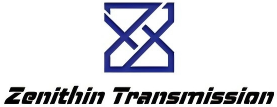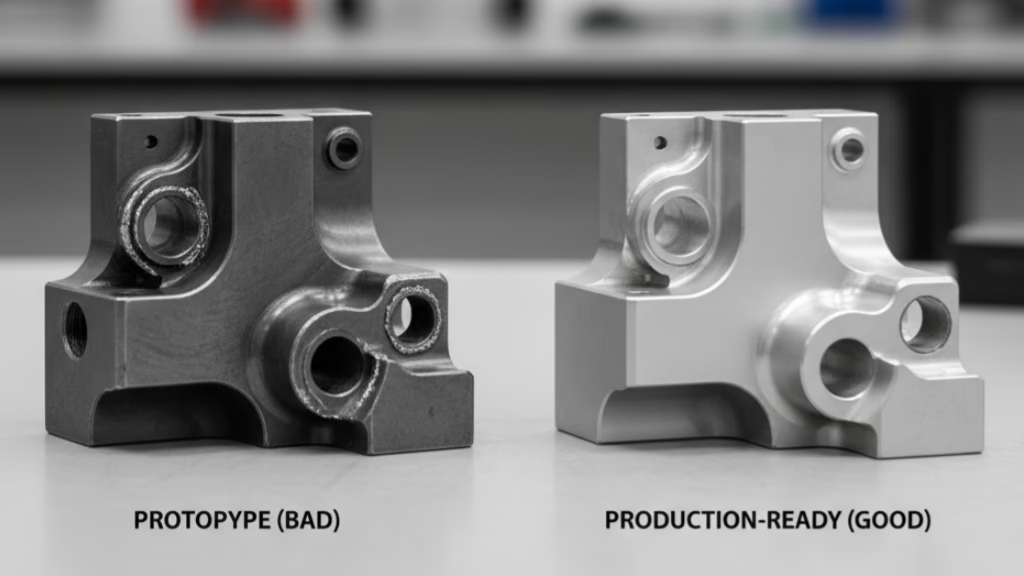Choosing the right CNC machining supplier is critical, but long before vetting, you must make the fundamental local vs. overseas sourcing decision. Once that is settled, the vetting process itself is filled with potential pitfalls.
This guide gives you a proven, step-by-step framework to identify warning signs early. You’ll learn how to move beyond superficial quotes and evaluate a supplier’s true quality and reliability.
Zu den wichtigsten Warnzeichen, auf die man bei der Überprüfung eines neuen CNC-Bearbeitungslieferanten achten sollte, gehören eine inkonsistente Qualitätskontrolle, schlechte Kommunikation, eine unorganisierte Werkstatt und das Fehlen überprüfbarer Zertifizierungen wie ISO 9001. Weitere Warnzeichen sind die mangelnde Bereitschaft, die Rückverfolgbarkeit von Materialien zu gewährleisten, vage Kostenvoranschläge, die die Kosten verschleiern, und eine defensive Haltung bei der Problemlösung.
Da Sie nun die Grundlagen und die zu vermeidenden roten Fahnen kennen, können Sie mit einem vollständigen positiver Rahmen für Lieferantenaudits. Ich zeige Ihnen auch die genauen Fragen, die Sie bei einem Audit vor Ort stellen müssen, und die "Problemlösungstests", die echte Partner von riskanten Anbietern unterscheiden.
Filtern Sie 80% von unqualifizierten Lieferanten heraus, bevor Sie Ihre Zeit verschwenden

Ihre Zeit ist Ihr wertvollstes Gut. Ziel dieser ersten Phase der Fernprüfung ist es, schnell und effizient die meisten ungeeigneten Bewerber von Ihrer Liste zu streichen, damit Sie Ihre Energie auf die wenigen konzentrieren können, die wirklich eine eingehendere Prüfung verdienen. Im Folgenden erfahren Sie, wie Sie die ersten Warnzeichen von Ihrem Schreibtisch aus erkennen können.
Inkonsistente Website und Dokumentation
In der heutigen digitalen Welt treffen Sie häufig auf zwei Arten von Anbietern: traditionelle Maschinenbaubetriebe und moderne On-Demand-Fertigungsplattformen. Während Plattformen beeindruckende Benutzeroberflächen und sofortige Angebote bieten, ist es wichtig, ihr Modell zu verstehen.
Viele fungieren als Vermittler und lagern Ihren Auftrag an ein Netz anonymer Geschäfte aus. Für schnelle Prototypen ist das in Ordnung. Aber für eine Produktionsserie kann dies eine "Kommunikations-Blackbox" schaffen, die Ihre direkte Verbindung zu den Maschinenbauern, die Ihre Teile herstellen, unterbricht.
Egal, ob es sich um eine Plattform oder einen Direktverkauf handelt, achten Sie auf die Substanz hinter dem Marketing. Eine schicke Website ist schön, aber wo sind die detaillierten Fallstudien? Die technischen White Papers? Die Beweise für echte Fachkompetenz? Wenn die digitale Präsenz eines Anbieters nur Stil und keine Substanz hat, ist das ein rotes Tuch.
Vage oder nicht überprüfbare Qualitätszertifikate
Jeder Anbieter kann behaupten, er sei "qualitätsorientiert", aber Zertifizierungen wie ISO 9001 oder AS9100 sind als objektiver Beweis gedacht. Nehmen Sie sie nicht einfach beim Wort.
- Fragen Sie nach der Bescheinigung: Fordern Sie eine Kopie der aktuellen Zertifizierung an.
- Überprüfen Sie das: Überprüfen Sie das Ablaufdatum und den Namen der Zertifizierungsstelle. Oft können Sie die Gültigkeit des Zertifikats direkt bei der Registrierstelle überprüfen.
Wenn ein Lieferant zögert, dies zu tun, oder wenn seine Zertifizierung abgelaufen ist, deutet dies darauf hin, dass sein Engagement für Qualität fragwürdig ist. Hier geht es nicht nur um Papierkram, sondern um eine Kultur der Prozesskontrolle.
Natürlich ist auch ein gültiges Zertifikat keine Garantie, und deshalb ist es wichtig zu wissen warum zertifizierte Lieferanten immer noch schlechte Teile liefern.
Undurchsichtige oder "Zu schön, um wahr zu sein"-Zitate
Der Kostenvoranschlag ist eine der ersten greifbaren Informationen, die Sie erhalten, und er erzählt eine Geschichte. Ein verdächtig niedriger Preis ist oft ein wichtiges Warnsignal.
Wie der Qualitätsguru Philip B. Crosby bekanntlich sagte: "Qualität ist kostenlos". Es ist die Mangel der Qualität - Nacharbeit, Ausschuss, Verzögerungen -, die Geld kosten.
Ein Angebot, das deutlich unter dem der Mitbewerber liegt, lässt vermuten, dass der Lieferant bei der Materialqualität, den Werkzeugen oder der Inspektion Abstriche macht, um eine hauchdünne Marge zu erzielen.
Verlangen Sie ein transparentes, detailliertes Angebot. Ein guter Lieferant wird die Kosten für Material, Einrichtung, Bearbeitungszeit und Endbearbeitung aufschlüsseln. Dies bringt uns zu dem Konzept der Gesamtbetriebskosten (TCO). Der billigste Stückpreis führt oft zu den höchsten TCO, wenn man die versteckten Kosten für die Verwaltung eines schlecht arbeitenden Lieferanten berücksichtigt.
Schlechte erste Eindrücke in der Kommunikation
Achten Sie genau auf Ihre ersten Interaktionen. Sind die Antworten auf E-Mails prompt und professionell? Werden Ihre technischen Fragen klar und direkt beantwortet, oder sind die Antworten vage?
Ein Lieferant, der nur langsam reagiert, die technischen Details Ihres Projekts nicht versteht oder sich nicht für die Anwendung Ihres Endprodukts zu interessieren scheint, zeigt Ihnen genau, wie er sich verhalten wird, wenn er Ihr Geld hat. Dies ist der Beginn des "schwarzen Lochs der Kommunikation", ein zentraler Schmerzpunkt für jeden Ingenieur. Wenn die Kommunikation während des Verkaufsprozesses ein Problem ist, wird sie während der Produktion zu einem Albtraum.
Auditing in der Werkstatt wie ein Experte, um verborgene Wahrheiten aufzudecken

Nachdem ein Lieferant den ersten Remote-Check bestanden hat, ist es an der Zeit, tiefer zu gehen. Hier kommt Ihre technische Kompetenz voll zum Tragen. Ob Sie nun einen Besuch vor Ort oder eine detaillierte Videotour durchführen, Sie müssen wissen, worauf Sie hinter der Oberfläche achten müssen. So kommen Sie den verborgenen Wahrheiten auf die Spur, die über die wahren Fähigkeiten eines Lieferanten entscheiden.
| Audit-Bereich | Was zu beachten ist | Kritische rote Flagge |
|---|---|---|
| Shop Floor Organisation | Sauberkeit, Ordnung (5S) | Unordnung, Desorganisation |
| Ausrüstung und Wartung | Protokolle zur vorbeugenden Wartung, OEE-Daten | Keine Aufzeichnungen, reaktive Reparaturen |
| Qualitätslabor | Klimakontrolle, CMM, Kalibrierung | Schlechtes Umfeld, veraltete Tools |
| Team & Kultur | Engagement, Nachfolgeregelung | Apathie, alternde Arbeitskräfte |
Desorganisiertes Shop Floor Management (5S)
Man muss kein Experte für schlanke Produktion sein, um einen unorganisierten Betrieb zu erkennen. Schauen Sie sich um. Liegen Werkzeuge und Materialien ungeordnet herum? Ist der Boden schmutzig oder unordentlich?
Eine chaotische Umgebung ist ein direktes Spiegelbild eines chaotischen Prozesses. Es ist fast unmöglich, konsistente, hochpräzise Teile in einer Einrichtung zu produzieren, die nicht die grundlegenden 5S-Grundsätze (Sortieren, Ordnen, Glänzen, Standardisieren, Erhalten). Chaos ist der Feind der Qualität.
Vernachlässigte Aufzeichnungen über die Wartung und Kalibrierung von Geräten
Moderne CNC-Maschinen sind beeindruckend, aber sie sind nur so gut wie ihre Wartung. Lassen Sie sich nicht von einem Laden voller teurer Markennamen beeindrucken. Fragen Sie stattdessen nach den Wartungsprotokollen der Maschinen.
Achten Sie auf einen proaktiven, präventiven Wartungsplan, nicht nur auf reaktive Reparaturen.
Gehen Sie einen Schritt weiter und fragen Sie nach ihren Gesamtanlageneffektivität (OEE). Eine Weltklassefertigung strebt eine OEE von 85% an. Wenn ein Zulieferer diese Kennzahl nachverfolgt und intelligent darüber diskutieren kann, wie er sie zur Verbesserung einsetzt, ist das ein deutliches Warnsignal. Wenn er Sie mit leerem Blick anschaut, deutet das darauf hin, dass es ihm an einem datengestützten Ansatz für seine eigenen Kernprozesse mangelt.
Ein primitives oder nicht vorhandenes klimakontrolliertes Qualitätslabor
Präzisionsmessungen erfordern eine stabile Umgebung. Das Qualitätslabor Ihres Lieferanten ist das Herzstück seines Betriebs. Achten Sie auf einen speziellen, klimatisierten Raum für die empfindlichsten Prüfgeräte, z. B. einen Koordinatenmessmaschine (CMM).
Überprüfen Sie die Kalibrierungsaufkleber auf dem Gerät. Sind sie aktuell? Bitten Sie einen Prüfer, eine GD&T-Angabe auf einer Ihrer Zeichnungen zu erklären. Ob er dazu in der Lage ist, zeigt deutlich, dass er über das nötige Fachwissen verfügt. Ein Qualitätslabor, das nachlässig ist - unsauber, nicht temperaturkontrolliert, mit veralteten Geräten - ist ein Zeichen dafür, dass Qualität nicht an erster Stelle steht.
Ein fragiler Prozess der Rückverfolgbarkeit von Materialien
Die Rückverfolgbarkeit von Materialien ist nicht verhandelbar, insbesondere bei kritischen Anwendungen. Bitten Sie den Lieferanten, Ihnen seinen Prozess zu erläutern. Kann er eines Ihrer Fertigteile bis zum ursprünglichen Rohmaterialzertifikat des Werks zurückverfolgen?
This chain of custody must be unbroken and well-documented. Any hesitation or gaps in this process represent an unacceptable risk of material non-conformance making its way into your final product, often leading to frustrating batch quality variation.
Der "menschliche Faktor" - ein apathisches Team und Nachfolgerisiken
Achten Sie genau auf die Menschen. Scheinen die Maschinisten und Inspektoren engagiert und stolz auf ihre Arbeit zu sein? Oder wirken sie eher apathisch? Eine positive Unternehmenskultur ist ein wichtiger Indikator für Qualitätsarbeit.
Strategischer ist es, das Alter und die Struktur des Teams zu beobachten. Die US-amerikanische Fertigungsindustrie steht vor der großen Herausforderung einer alternden Belegschaft. Ein altgedienter Maschinist mit 40 Jahren Erfahrung mag Sie beeindrucken, aber Sie müssen sich fragen: Wen bildet er aus?
Gibt es einen klaren Plan für die Weitergabe dieses unschätzbaren Wissens an die nächste Generation? Ein Betrieb, der keine jungen Auszubildenden oder Nachwuchsingenieure hat, ist einem großen Nachfolgerisiko ausgesetzt. Das "Stammeswissen", das für die perfekte Herstellung Ihrer Teile verantwortlich ist, könnte verloren gehen, wenn diese eine Schlüsselperson in den Ruhestand geht.
Achten Sie auf eine gesunde Mischung aus erfahrenen Experten und enthusiastischen jungen Talenten; das ist ein Zeichen für einen nachhaltigen, langfristigen Partner.
Benötigen Sie einen zuverlässigen Hochpräzisionspartner?
Lassen Sie Ihr Projekt nicht durch Zuliefererprobleme entgleisen. Zenithin ist auf hochpräzise CNC-Bearbeitung spezialisiert und liefert Teile, die die strengsten Toleranzen einhalten, unterstützt durch ein robustes Qualitätssystem.
Bewertung der kulturellen Passung und der langfristigen Verlässlichkeit

Technische Fähigkeiten sind nur die halbe Miete. Aufbau einer erfolgreiche Produktionsbeziehung ist eine echte Partnerschaft.
In dieser letzten Phase der Überprüfung geht es nicht nur um die Teile und Maschinen, sondern auch um die Kultur, die ethischen Grundsätze und die langfristige Zuverlässigkeit des Lieferanten.
Diese Faktoren sind oft der Unterschied zwischen einem reibungslosen Projekt und einem ständigen Kampf.
Eine defensive Haltung, wenn man mit Problemen konfrontiert wird
Probleme in der Produktion sind unvermeidlich. Es kommt darauf an, wie Ihr Lieferant darauf reagiert. Testen Sie deren Problemlösungskultur anhand eines hypothetischen Szenarios. Fragen Sie sie: "Wenn wir ein potenzielles Entwurf für Herstellbarkeit (DFM) Frage in einem Modell, das wir Ihnen geschickt haben, wie würde Ihr typischer Prozess aussehen?"
Ein echter Partner wird einen kollaborativen Prozess der Analyse und Kommunikation beschreiben. Ein Lieferant mit einer schlechten Kultur wird defensiv werden und vielleicht sagen: "Wir bauen nur nach dem Druck." Das zeigt Ihnen, dass er, wenn ein echtes Problem auftritt, mehr daran interessiert ist, die Schuld zuzuweisen, als eine Lösung zu finden.
Zögern bei der Unterzeichnung einer strengen NDA
Ihr geistiges Eigentum (IP) ist Ihr Wettbewerbsvorteil. Eine Geheimhaltungsvereinbarung (Non-Disclosure Agreement, NDA) ist ein Standard und ein wesentlicher Bestandteil der Geschäftstätigkeit. Wenn ein potenzieller Lieferant zögert, versucht, die Bedingungen zu verwässern, oder sie als unnötige Formalität betrachtet, sollten Sie die Finger davon lassen.
Dies zeugt von einem grundlegenden Mangel an Respekt für Ihr Unternehmen und ist ein wichtiger Indikator für zukünftige Unzuverlässigkeit.
Die unlogisch niedrige Quote
Wir haben dies bereits angesprochen, aber es ist ein kulturelles Warnsignal, das es wert ist, wiederholt zu werden. Wie der legendäre W. Edwards Deming riet, müssen Sie "Beenden Sie die Praxis der Auftragsvergabe auf der Grundlage von Preisschildern".
Ich habe einmal mit einem Kunden zusammengearbeitet, der einen Lieferanten wählte, dessen Angebot 30% niedriger war als das aller anderen. Die Kosten für die Bewältigung der ständigen Qualitätsprobleme, der verpassten Termine und der schlechten Kommunikation überstiegen diese anfänglichen Einsparungen bei weitem. Ein Preis, der der Marktlogik zuwiderläuft, ist kein gutes Geschäft, sondern eine Warnung, dass der Lieferant etwas Entscheidendes opfert - Qualität, Materialien oder Ethik -, um den Auftrag zu erhalten.
Keine Bereitschaft, nachprüfbare Kundenreferenzen vorzulegen
Ein Anbieter, der stolz auf seine Arbeit ist, wird Sie gerne mit seinen langjährigen Kunden in Verbindung bringen. Wenn sie sich weigern oder Referenzen angeben, die vage sind oder nicht reagieren, ist das ein klares Zeichen dafür, dass sie in der Vergangenheit Brücken abgebrochen und Erwartungen nicht erfüllt haben.
Die Lücke zwischen "perfektem Prototyp" und "Produktionsproblem"
Dies ist eine klassische Falle. Ein Lieferant schickt Ihnen eine Handvoll makelloser Prototypen und gewinnt damit Ihr Vertrauen und einen großen Produktionsauftrag. Doch wenn die erste Produktionscharge eintrifft, ist die Qualität bei weitem nicht so gut.
Ich habe dies auf die harte Tour bei einem Projekt im Bereich der Unterhaltungselektronik gelernt, bei dem ein Zulieferer wunderschöne Muster herstellte, indem er seinen besten Maschinisten unbegrenzt viel Zeit für sie aufwenden ließ. Der Standardproduktionsprozess war jedoch nicht in der Lage, diese Qualität in großem Maßstab zu wiederholen. Fragen Sie immer: "Wurde dieser Prototyp mit Ihrem Standardproduktionsverfahren und Ihrer Standardausrüstung hergestellt?" Der Prozess eines vertrauenswürdigen Lieferanten ist wiederholbar.
Unkenntnis der eigenen Lieferkette
Die Risiken Ihrer Lieferanten sind auch Ihre Risiken. Fragen Sie sie nach ihren wichtigsten Rohstofflieferanten. Haben sie Backups? Wie werden sie qualifiziert?
Ein Lieferant, der nicht in der Lage ist, intelligent über seine eigene Lieferkette zu sprechen, ist ein einziger Fehlerpunkt. Eine Unterbrechung in der Materialversorgung wird zum Albtraum Ihrer Produktion. Sie brauchen einen Partner, der seine gesamte Wertschöpfungskette verwaltet, nicht nur die vier Wände seines eigenen Geschäfts.
Ihre erste Verteidigungslinie
Choosing a manufacturing partner is one of the most critical decisions you will make, which is why we also created a complete partner selection guide to complement this list of red flags.
Remember, das Ziel ist nicht, die billigste Lieferanten zu finden, sondern den zuverlässigsten und günstigsten Gesamtkosten Partner.
Die Überprüfung eines Lieferanten ist nicht nur eine weitere Aufgabe auf Ihrer To-Do-Liste, sondern eine grundlegende Strategie des Risikomanagements.
Als Ingenieur sind Sie die erste und wichtigste Verteidigungslinie gegen die kostspieligen Folgen einer schlechten Lieferantenwahl.
Sie verfügen über das technische Fachwissen, um über das Verkaufsargument hinauszuschauen und die tatsächliche Leistungsfähigkeit zu beurteilen, insbesondere wenn es um die Fähigkeit eines Anbieters geht, die Nachbearbeitung zu bewältigen.
Eine wichtige Rolle spielt dabei das Verständnis ihres Ansatzes zur Schaffung eines integrierte CNC- und Schlichtungsführung.
Wenn Sie diesen Rahmen nutzen, kaufen Sie nicht nur Teile, sondern Sie schützen Ihr Design, Ihr Projekt und Ihren unschätzbaren beruflichen Ruf.
Ein guter Lieferant wird Ihre detaillierten Fragen begrüßen, weil sie Ihre Professionalität und Ihr Engagement für Qualität demonstrieren. Wenn Sie das nächste Mal einen Lieferanten für die CNC-Bearbeitung prüfen, nehmen Sie diesen Leitfaden mit. So finden Sie nicht nur einen Lieferanten, sondern auch einen Partner.
Sind Sie bereit für den Aufbau einer zuverlässigen Lieferkette?
Sie haben die roten Fahnen gesehen. Jetzt sollten Sie sich mit einem CNC-Bearbeitungsexperten zusammentun, der die grünen Flaggen verkörpert. Lassen Sie uns besprechen, wie Zenithin der zuverlässige, hochpräzise Fertigungspartner werden kann, den Ihre Projekte verdienen.
Referenzen und Anmerkungen
[1] "Qualität ist kostenlos": Dieses Konzept wurde von Philip B. Crosby in seinem gleichnamigen Buch aus dem Jahr 1979 bekannt gemacht. Es besagt, dass die Kosten für die Vermeidung von Fehlern (Schulung, Prozessverbesserung) weitaus geringer sind als die Kosten für deren Behebung (Nacharbeit, Ausschuss, Garantieansprüche).
[2] W. Edwards Deming: Deming, eine Schlüsselfigur der modernen Qualitätskontrolle, rät in Punkt 4 seiner "14 Punkte für das Management" davon ab, Lieferanten allein nach dem Preis auszuwählen, und plädiert dafür, die Gesamtkosten durch langfristige Partnerschaften zu minimieren.




